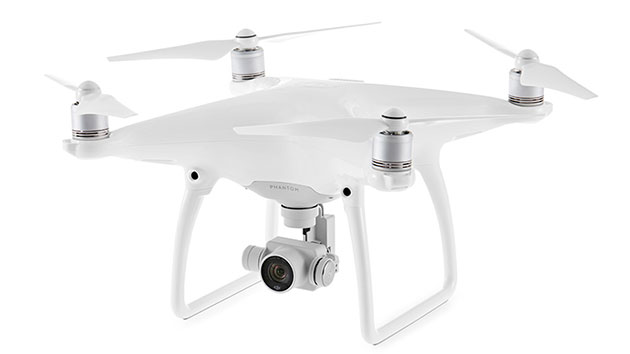Revised Drone Has Obstacle Sensors, Supports New Flight Control Options in Mobile Apps
DJI said its Phantom drone will be easier to fly — and harder to crash — with the release later this month of the new Phantom 4.
The $1,399 Phantom 4 quadcopter improves on its predecessors with new sensor technology designed to help it automatically avoid obstacles. If the Obstacle Sensing System detects an unavoidable obstacle, it will switch into hover mode and await user redirection, DJI said. The obstacle-avoidance system also works in the Phantom 4's return-to-home mode. It should also be safer to fly indoors, with its Vision Positioning System expanded to 10 meters of altitude.
A new ActiveTrack feature is said to let users specify moving subjects for the Phantom to track optically (no physical tracking devices are required on the subject), and the related TapFly feature lets users send the drone to a specific location by tapping a destination point while monitoring the camera's live view on a tablet display with the DJI Go iOS or Android app.
"With the Phantom 4, we are entering an era where even beginners can fly with confidence," said DJI CEO Frank Wang in a prepared statement.
Flight time has been increased to 28 minutes (compared to 23 minutes for the Phantom 3) and speed is up more than 20 percent to 45 mph (from 36mph for the Phantom 3) in its new "sport mode."
DJI said the camera's optics have been further refined, improving corner sharpness and cutting down on chromatic aberration. Like its predecessor, the camera shoots UHD at up to 30p, but 1080p frame rates have been doubled tro a maximum of 120p this time around.
The Phantom 4 will start shipping March 15 through DJI's website and Apple.com, the company said, with shipments from other retailers beginning April 1.
Did you enjoy this article? Sign up to receive the StudioDaily Fix eletter containing the latest stories, including news, videos, interviews, reviews and more.










Leave a Reply